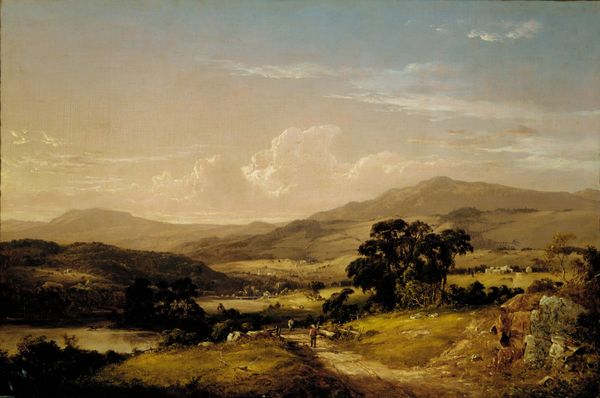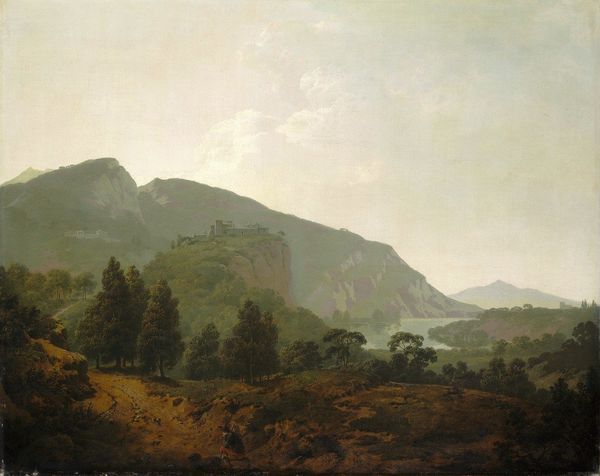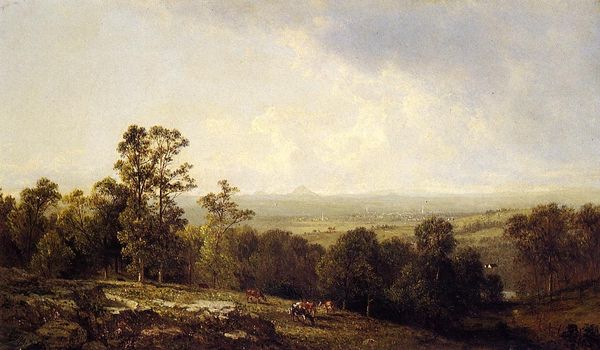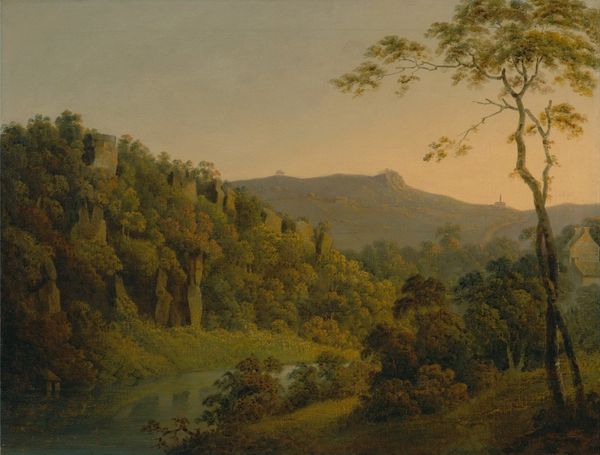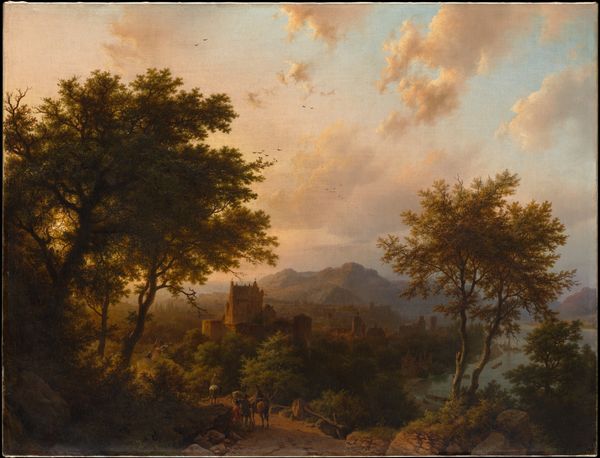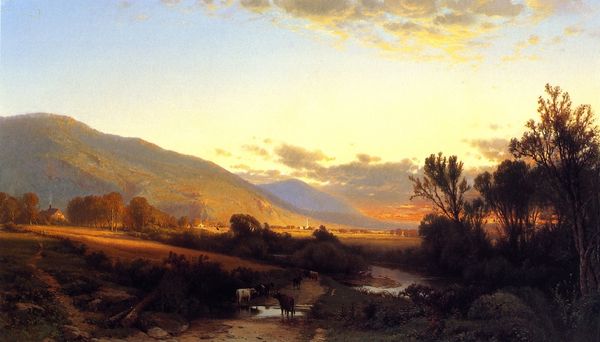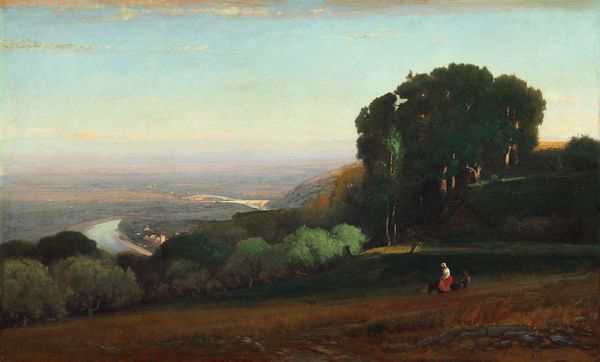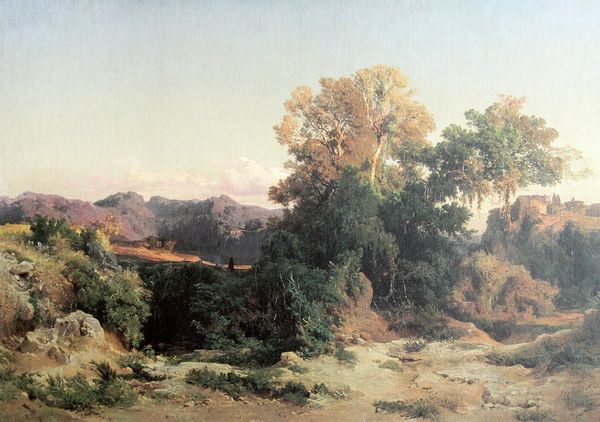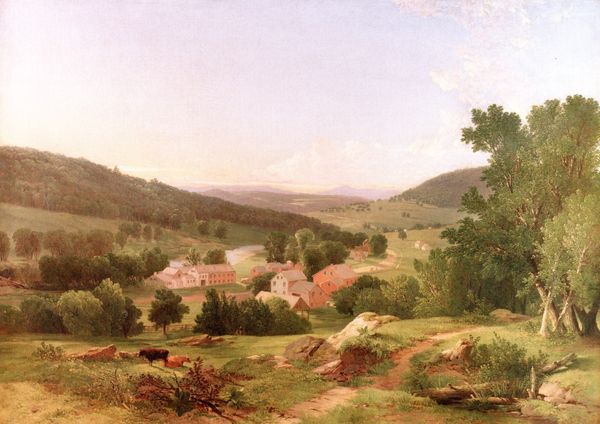
Autumn in the Conway Meadows Looking towards Mount Washington, New Hampshire 1858
0:00
0:00
albertbierstadt
Private Collection
Dimensions: 48.26 x 71.12 cm
Copyright: Public domain
Curator: Albert Bierstadt created this stunning landscape, "Autumn in the Conway Meadows Looking towards Mount Washington, New Hampshire" in 1858. It's an oil on canvas, and embodies the spirit of the Hudson River School. Editor: My first impression is of a serene, almost ethereal space. The colors are muted, but that expansive meadow feels vast and somehow melancholic. There is some heavy foreshadowing through dark masses, so to say. Curator: Exactly, and it captures a particular moment in American expansion. The Hudson River School, and Bierstadt especially, were key in shaping perceptions and promoting a specific ideology. Editor: That ideology being Manifest Destiny, right? Representing the American landscape as an untouched paradise to legitimize westward expansion and Indigenous displacement. Look at the soft, romantic light almost like a blessing. Curator: Precisely. Bierstadt masterfully manipulates light to create this sublime effect, but his landscapes were often composite scenes, more idealized than strictly real. Editor: And that idealization served a political purpose. These paintings romanticized nature, erasing the complexities of the land and its history. The absence of any clear traces of Indigenous presence is deafening. We see deer, mountains, forest— the land for the taking, in other words. Curator: Yes, and the scale is significant, it emphasizes the grandeur and potential bounty of the land and serves as a visual endorsement of territorial acquisition. It's fascinating how art can simultaneously inspire awe and mask problematic agendas. Editor: The art historical legacy of landscapes has always served specific sociopolitical narratives. It serves as a great reminder to critically analyze even the most beautiful scenes, thinking about whose stories are told and whose are erased. It does feel wrong that we only get to discuss that, rather than aesthetics itself. Curator: Absolutely. Art always operates within complex social and historical frameworks. That’s part of what makes looking at the pieces such a complicated experience. Editor: For sure. Even in an awe-inspiring space, it is never exempt from historical critique. It's something we always need to consider, to unveil these layers, and appreciate what is.
Comments
No comments
Be the first to comment and join the conversation on the ultimate creative platform.




